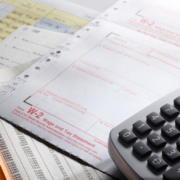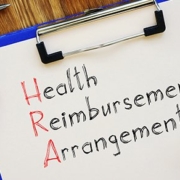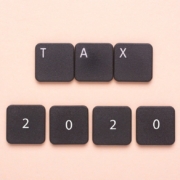The Energy-Saving Tax Credit Is Back! Do You Qualify?
- Learn about the Residential Energy (Efficient) Property Credit.
- Find out how the lifetime credit may affect you.
- Learn about credit limits and restrictions.
- Find out which property qualifies for the credit.
- Learn more about per-item credit limits.
- Find out how your home's basis is affected by improvements and credits.
- Learn more about amending your 2018 return with this retroactive extension.
On December 20, 2019, President Trump signed into law the Appropriations Act of 2020, which included a number of tax law changes, including retroactively extending certain tax provisions that expired after 2017 or were about to expire, a number of retirement and IRA plan modifications, and other changes that will impact a large portion of U.S. taxpayers as a whole. This article is one of a series of articles dealing with those changes and how they may affect you.
What is the Residential Energy (Efficient) Property Credit?
The Residential Energy (Efficient) Property Credit was initially introduced in 2006. The credit’s name is somewhat misleading, and the credit is best described as an energy-saving tax credit since it applies to improvements to the taxpayer’s existing primary home to make it more energy efficient.
Over the years since it was first introduced, it has provided a tax credit in amounts varying from 10% to 30% of the cost of energy-saving devices installed as part of a taxpayer’s home, with the maximum energy-saving tax credit ranging from $500 to $1,500. Currently, the credit percentage is 10%, with a lifetime credit amount limited to $500.
Since the credit currently has a lifetime credit of $500, that means if you have ever claimed this credit in the past, going all the way back to 2006, you must reduce any credit currently claimed, limited to the $500, by any credit amount you claimed in any prior year. As a result, taxpayers who claimed the maximum credit amount in the past won’t be eligible for any additional credit under this extension.
But, if you haven't claimed this credit before or haven't met your lifetime max credit, and this is something you've considered for your home, Fiducial suggests you read on for more info.

Credit restrictions
Generally, this energy-saving tax credit equals 10% of the cost of the following improvements that meet certain Energy Star requirements:
- An advanced main air-circulating fan;
- A natural gas, propane, or oil furnace;
- A natural gas, propane, or oil hot water boiler;
- Energy-efficient heat pumps;
- Energy-efficient water heaters;
- Energy-efficient central air conditioners;
- Insulation;
- Metal roofs with appropriate pigmented coatings;
- Asphalt roofing with appropriate cooling granules;
- Exterior storm windows and skylights;
- Exterior storm doors; and
- Others not listed here.
To qualify for the energy-saving tax credit, the home must be the taxpayer’s primary residence and be located in the U.S., the improvement must generally have a life of 5 years or more, and the original use must begin with the taxpayer.
The energy-saving tax credit is non-refundable, meaning it can only be used to offset your tax liability to bring it down to zero, and there is no carryover provision, so any portion of the credit not used in the year when the credit is earned is lost.
And last, but not least, there are also credit limits for certain items:
- Qualified Windows and Skylights $200
- Qualified Advanced Main Air Circ. $50
- Qualified Hot Water Boilers $150
- Qualified Energy-Efficient Equip. $300
A few more things to know…
Basis Adjustment – The basis of your home is increased by the amount you spend on an energy-efficient improvement but is then reduced by the amount of the energy-saving tax credit. So even if you can’t claim the credit because you’ve exceeded the lifetime credit limit, the cost of the energy-efficient property will increase your home’s basis.
Retroactive Extension – Since this credit was retroactively extended to 2018, if you made qualifying improvements in 2018, you can amend your 2018 return and claim the credit. Your Fiducial representative can help you with this process. Since this credit has been extended through 2020, it can also be claimed for energy- efficient improvements made in 2019 and 2020 as long the $500 lifetime credit limit will not be exceeded.
If you have questions about this credit or think you might qualify for the credit in 2018 and want to see if the credit is worth the cost of amending your return, call Fiducial at 1-866-FIDUCIAL or make an appointment at one of our office locations. Ready to book an appointment now? Click here. Know someone who might need our services? We love referrals!









